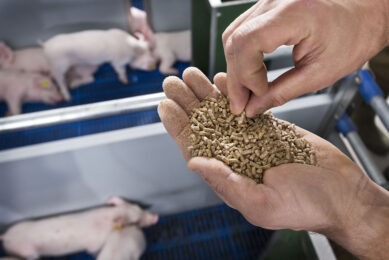Fiber
Fiber in sow diets! Now, this is a widely debated issue and it is my intention only to provide a cross reference drawn from the most widely accepted ‘norms’. I expect this to raise a lot of questions and why not, a constructive debate!
First of all, let me say that even the word fiber has no single interpretation among nutritionists. Is it crude fiber, dietary fiber, or something in between these two extremes?
For all practical reasons, we will remain with the most commonly used term, crude fiber, which although it does not include all such compounds that could potentially impart a ‘fiber’ effect, it nevertheless is a widely available figure in most nutrition books and it is well understood by nutritionists and producers alike.
Adult breeding sows
Right! So, how much fiber sows need? Adult breeding sows have the digestive capacity to ingest and digest quite large amounts of fiber, but for practical reasons, we certainly want to limit this.
Right! So, how much fiber sows need? Adult breeding sows have the digestive capacity to ingest and digest quite large amounts of fiber, but for practical reasons, we certainly want to limit this.
So, starting from lactating sows, from which we anticipate maximal feed intake, crude fiber concentration should be limited to around 3-4%. This, of course, may cause digestive upsets, namely constipation, but it is here where the use of chemical and/or natural laxatives should be used to maximum benefit.
Gestating sows
It is quite the opposite in gestating sows. Here, we want to limit feed intake to prevent fatness and as such gestating sows are usually offered a quantity of feed that barely covers their hunger, in other words satiety is not achieved.
It is quite the opposite in gestating sows. Here, we want to limit feed intake to prevent fatness and as such gestating sows are usually offered a quantity of feed that barely covers their hunger, in other words satiety is not achieved.
Thus, it is quite beneficial to offer high-crude fiber diets to gestating sows. In limited-fed animals, crude fiber should be around 6-8%, but in ad libitum fed animals, crude fiber concentration can be as high as 12-15%.
And, of course, in this case, laxatives are not needed, which might be an obvious conclusion, but I have seen a fair number of gestating diets with high fiber and a strong laxative!
Young developing gilts
Finally, we should evaluate the ‘needs’ for crude fiber for young developing gilts. Again, we should split them into limit-fed versus ad libitum-fed animals. In the first case, diets should contain around 3-5% fiber, whereas in the second case crude fiber can be as high as 12-15%.
Finally, we should evaluate the ‘needs’ for crude fiber for young developing gilts. Again, we should split them into limit-fed versus ad libitum-fed animals. In the first case, diets should contain around 3-5% fiber, whereas in the second case crude fiber can be as high as 12-15%.
A word of caution is needed here. As genetic maturity is quite variable among commercial breeds and growth/development targets are different from farm to farm, gilt diets should be always custom-made to match required growth and thus, crude fiber concentration should also be adjusted accordingly. So, a single size does not fit all, at least for gilts!
In the next installment of this topic, we shall examine sources of fiber suitable for sow diets…
Join 18,000+ subscribers
Subscribe to our newsletter to stay updated about all the need-to-know content in the pigsector, three times a week. Beheer
Beheer










 WP Admin
WP Admin  Bewerk bericht
Bewerk bericht